"The irreplaceable Iroquois"
Bell UH-1 "Iroquois" (born Bell UH-1 Iroquois) - American multi-purpose helicopter company Bell Helicopter Textron, also known as "Huey" (Huey). This is one of the most famous and popular cars in stories helicopter
The history of the UH-1 began in the mid-fifties, when a competition was announced for the creation of a multi-purpose helicopter, which was to replace the piston Sikorsky UH-34.
Of the proposed projects in 1955, the development of Bell Helicopter Company with the designation Model 204 was chosen. The helicopter was supposed to install a new turboshaft engine Lycoming T53. The first of the three helicopter prototypes, designated XH-40, flew 20 on October 1956 in October at the factory airfield in Fort Worth, Texas.
In the middle of 1959, the first serial UH-1A modification helicopters equipped with the Lycoming T53-L-1A engine with a capacity of 770 l. with. began to enter the US Army. In the army they received the designation HU-1 Iroquois (from 1962 g. - UH-1). Part of the helicopters was armed with two machine guns caliber 7.62 mm and sixteen NUR caliber 70 mm.
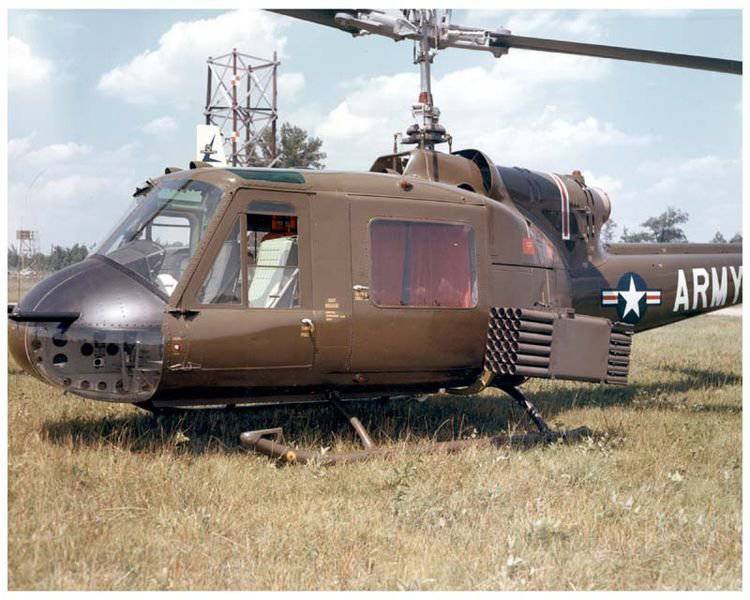
In March, an improved version of the UH-1961B helicopter with a T1-L-53 engine with an 5 hp power was adopted.
The payload of the new helicopter reached 1360 kg., While it could lift two pilots and seven soldiers in full gear, or five wounded (three of them on stretchers) and one attendant. In the version of the helicopter fire support on the sides of the fuselage mounted machine guns and NUR.
At the beginning of 1965, the UH-1B in mass production was replaced by a new modification of the UH-1C (Model 540) with an improved main rotor, which allowed reducing vibration, improving controllability and increasing maximum speed. The helicopter was installed engine Lycoming T55-L-7C. He could carry on an external suspension up to 3000 kg of cargo with a take-off weight of 6350 kg and reach a maximum speed of 259km / h.
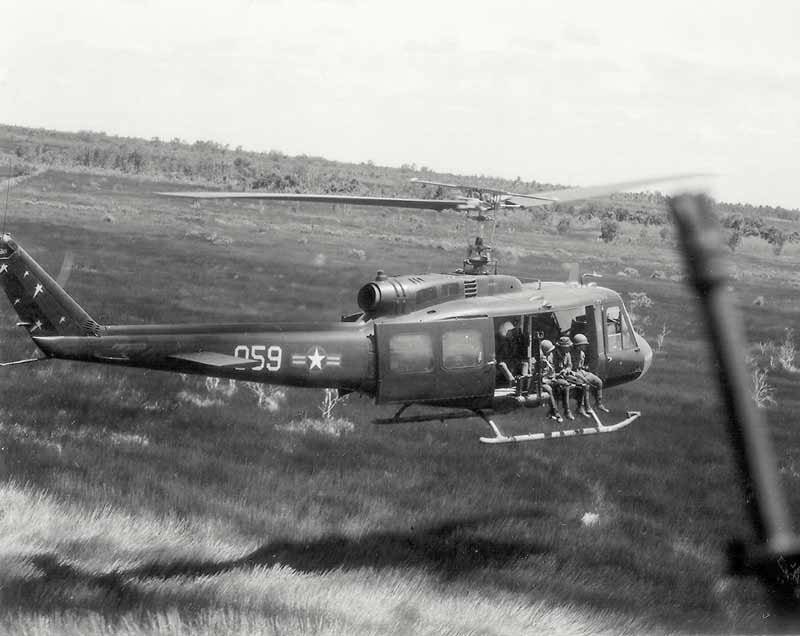
Shortly after adopting the new helicopters were sent to Vietnam. The 15 helicopters of the Auxiliary Tactical Transport Company formed in Okinawa 15 July 1961 were the first to arrive there. Its personnel were tasked with exploring the possibility of using UH-1A to attack ground targets and escort transport helicopters. A year later, the company was transferred to Thailand, where it took part in the maneuvers of the SEATO block, and already on July 25, 1962 arrived at Tansonnath airbase in South Vietnam. The first combat sortie for the escorting of CH-21 transport helicopters "Iroquois" was performed on 3 August.
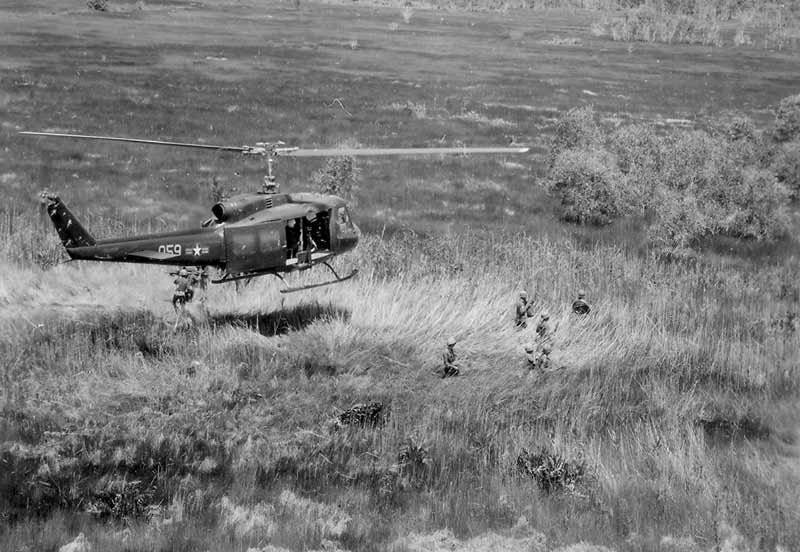
5 January 1963 The company lost its first car. Ten CH-21 and five armed Hughs took part in the landing operation in the village of Ap Bak. The four-wave CH-21 transport should have landed the South Vietnamese infantry. The first wave reached the landing zone and unloaded without interference. The descending fog delayed the arrival of the other three groups for an hour and a half. Helicopters of the second and third waves also delivered soldiers without hindrance. Half an hour later, the fourth wave approached. This time the helicopters met a wall of fire. All cars got hit by bullets. One of the Iroquois had the main rotor blade shot, it crashed, the crew died.
According to the experience of military operations, the continuous improvement of the Iroquois went on, new modifications appeared, with improved equipment and more powerful engines.
UH-1D differed from all of its predecessors by increased to 6.23 cubic meter. the volume of the cabin. The payload reached 1815 kg. The helicopter was equipped with a T53-L-11 engine with shaft power 820kW.
A modification of the UH-1E was created for the US Marine Corps. It differed from the UH-1B with the new composition of the radio equipment, and since 1965 with the new rotor, similar to the UH-1C. Serially, the UH-1E was produced from February 1963 to the summer 1968. The helicopter was actively used in Vietnam for landing and rescue operations.
Compared to the army aviationThe Marine Corps had relatively few combat helicopters. In the spring of 1967, there were only two UH-1E squadrons in Vietnam. At first, these were not armed search and rescue vehicles. But soon the development of search and rescue tactics led to the appearance of special armed vehicles. The Iroquois Marine Corps often performed tasks in Vietnam that were far from search and rescue. UH-1E were used in the same way as army helicopters. I had to install four M-60 machine guns and NAR blocks on them. Unlike army vehicles, the machine guns were mounted motionless on the marine "Iroquois". In 1967, the marine rotorcraft received turrets with two M-60 machine guns.
"Iroquois" from June 1963, began to enter into service with light airmobile mouths. Each of them included two platoons of transport helicopters and a platoon of fire support.
The number of helicopters operating in Vietnam grew very quickly, in the spring of 1965 there were some Iroquois there were about 300 (about 100 of them were UH-1 B drums), and at the end of the decade the Americans had only Iroquois more in Indochina what was in service with the armies of all other countries of the world - about 2500.
The squadrons of the "air cavalry" became widely known. The squadron consisted of three platoons: reconnaissance, fire support and transport. The first armed forces consisted of light helicopters OH-13 or OH-23, the second - UH-1В, and the third flew the UH-1D. Very often reconnaissance and attack helicopters operated in a single battle formation.
To increase the payload from the helicopters, chairs and doors were often dismantled, as well as auxiliary equipment, without which it was possible to do in flight. The bodyguard was also shot, which the crews considered to be useless ballast. According to the pilots, the main defense was the speed and maneuverability of helicopters. But the increase in flight performance could not guarantee invulnerability.
The losses of helicopters can be judged by the memories of the flight engineer R. Chinovise, who arrived in Vietnam in January 1967. A novice discovered at least Tantonnath airbase at least 60 damaged and completely broken "Iroquois". At the same time, most of the holes were in the middle parts of the fuselages - shooters and technicians were killed and wounded much more often than pilots.
Very soon, the Iroquois became the “workhorse” of the airborne units, the Americans switched from using rotary-wing vehicles in small units (platoon-company) to forming a helicopter division. In the middle of February, 1963 began the formation of the 11 th air assault division and the 10 th air transport brigade assigned to it. The staff of the division was defined in 15 954 man with 459 helicopters and airplanes. The “air cavalry” squadron was supposed to have 38 UH-1B helicopter fire support helicopters (including four helicopters armed with SS.11 ATGM or TOW) and 18 UH-1D transport.
The division artillery consisted of an aviation missile battalion - XHUMX UH-39B helicopters armed with unguided missiles. For actions in the enemy's rear part of the division included a company "trackers". The delivery of reconnaissance and sabotage groups was assigned to six UH-1B helicopters. The main striking force of the division was two assault helicopter battalions, each with 1 armed UH-12B and 1 UH-60D transport. Unlike the "air cavalry" squadron helicopters, the UH-1B assault battalions had only machine-gun armament and were intended to escort transport vehicles and final clearance of the landing area. The entire statewide division was supposed to have (among other aircraft) 1 attack helicopters UH-137B and 1 UH-138D transport helicopters. The usual proportion of armed helicopters in relation to transport flights on combat missions was initially 1: 1, but according to the experience of war, the number of helicopter gunships had to be increased: one UH-5B to three UH-1D.
The most advanced modification used in Vietnam was the UH-1H with Avco Lycoming T53-L-13 engine with shaft power 1044 kW. Its shipments began in September 1967.
Combat experience revealed a number of flaws in Hugh. Because of the low speed, heavy armed vehicles of the UH-1B modification were easily hit by machine guns, especially large-caliber ones, and most importantly, they did not keep pace with the faster UH-1D. Insufficient strength of the tail boom was noted - during rough landing it broke from contact with the ground, damaged from frequent strikes against tree branches during low-altitude flights. The power of the UH-1D engine was enough to transport only seven fighters with full equipment instead of nine or, moreover, twelve. In the heat of the UH-1D, flying in the mountains, took on board only five paratroopers. The lack of power did not allow the installation of serious armor on helicopters. Often, pilots in a combat situation loaded their "horses" on the principle of "climb as long as there is space." As a result of overload, the engine is jammed; the helicopter fell, rolled over and caught fire. Another reason for not fighting losses were reflex movements. There is a case in which the pilot jerked his hand abruptly at a close break. The helicopter banked sharply, hooking the telegraph pole with the propeller blade. The car crashed.
Iroquois was perhaps the most recognizable symbol of the Vietnam War, along with Phantom and the B-52. In total, over the 11 years of the war in Southeast Asia, according to official data, US Army helicopters made 36 million sorties, flown 13,5 million hours, 31 000 helicopters were damaged by anti-aircraft fire, but only 3500 of them (10%) were shot down or made forced landing. Such a low ratio of casualties to the number of combat missions is unique to aircraft in conditions of intense combat operations — 1: 18 000. However, a significant part of combat losses fell into the “flight accidents” column.
For example, if a wounded helicopter landed at its aerodrome, where it burned safely, it was not counted as a downed one. The same happened with the decommissioned machines, which managed to return, but were not subject to recovery.
Due to the vulnerability of UH-1В helicopters of fire support, which suffered great losses, a program was launched to create on its base a specialized AN-1 shock cobra, which had much better protection. "Iroquois" was too vulnerable to small arms weapons and especially large-caliber machine guns that form the basis of the Viet-Kong air defense system.
Several hundred helicopters were handed over to South Vietnam, these machines were actively used in combat until the very last days. When the collapse of the Saigon regime became inevitable, they were used to flee the country.
A significant part of the helicopters handed over by the Americans to South Vietnam went after the fall of Saigon as trophies of the DRV army. Where they are actively used until the end of the eighties.
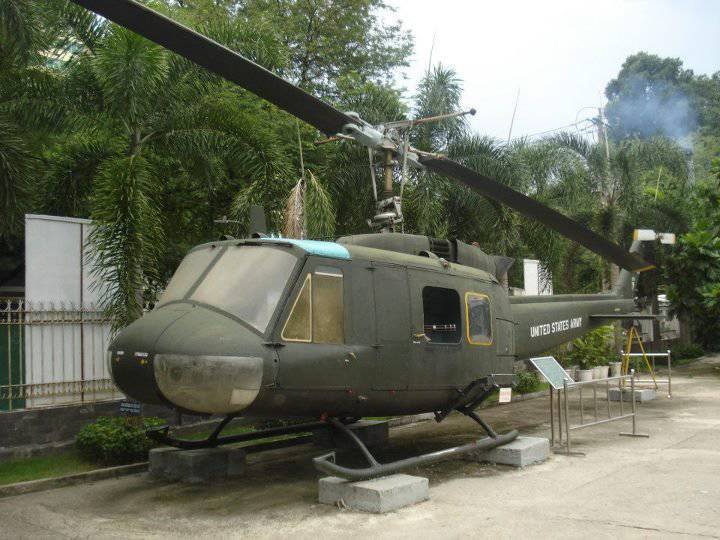
After a successful debut in Vietnam, the Iroquois spread very widely throughout the world. Often used helicopters were transferred to “pro-American” oriented countries as part of military assistance. More than 10000 helicopters were exported. In Japan and Italy, they were released under license, in total about 700 machines were built.
In the early seventies, on the basis of the UH-1D for the Navy and the Marine Corps (ILC), a twin-engine modification UH-1N was created. The power plant of the PT6T Twin-Pac helicopter of the Canadian company Pratt & Whitney Aircraft Canada (PWAC) consisted of two turboshaft engines installed side by side and rotating the main rotor shaft through a gearbox. The shaft power output of the first production helicopter was 4,66 kW / kg. In the event of a malfunction of one of the two turbines, torque sensors located in the collecting gearbox transmitted a signal to the serviceable turbine and it began to generate shaft power in the range from 764 kW to 596 kW, for emergency or continuous operation, respectively.
This technical solution has improved the safety of the flight and the survival rate of the machine in case of damage to a single engine.
At about the same time, the civilian version of the helicopter was created. It differed from the military model in the cabin and electronic equipment.
8 Model 212 helicopters in 1979g. were delivered to China. Model 212 helicopters under the name Agusta-Bell AB.212 were also produced in Italy under license from Agusta.
The helicopters of the UH-1 family in the US Army were gradually driven out by a more heavy-duty and high-speed Sikorsky UH-60 Black Hawk.
But the USMC was in no hurry to abandon the well-proven machine.
On the decks of amphibious assault ships, compact Iroquois occupied much less space.
To replace the aging UH-1N at Bell Helicopter Textron, in the beginning of 2000-x, work began on creating a new modification of the helicopter. The helicopter modernization program was carried out in parallel with the work on the AH-1Z King Cobra helicopter.
The new version of "Hugh" received the designation UH-1Y Venom.
The helicopter is equipped with a four-blade main rotor made of composite materials, the 2 GTE General Electric T700-GE-401, the fuselage size has been increased for additional avionics, a new avionics kit including GPS and digital mapping system are installed, new systems of passive and active radio engineering countermeasure are installed. Significantly expanded the range of weapons used. Passenger capacity increased to 18 people, and maximum speed to 304 km / h. The serial production of the UH-1Y started in the 2008 year.
The cost of the entire modernization program of nearly three hundred Hugh and Super Cob, as well as the purchase of new helicopters by marines and the US Navy will exceed 12 billion dollars. That is characteristic, the principle of production economy is not forgotten. The hull systems, avionics and the UH-1Y propulsion system on the 84 percent are compatible with the above-mentioned AH-1Z King Cobra fire support helicopters, which will greatly simplify maintenance.
The tendency to wash out old aircraft samples from combat, well marked in 90 and 2000, paradoxically does not apply to some machines. No alternative, for example, is the B-52 bomber and the military transport C-130. Simple, familiar and reliable "Hugh" also became such a weapon.
Since the start of mass production in 1960, more than 16000 have been produced. UH-1 various modifications. Machines of this type have been used in more than 90 countries. A significant part of them is still in flight. Given the launch into production of a new modification, there is no doubt that these helicopters will take off for several more decades.
Based on:
http://airspot.ru/catalogue/item/bell-uh-1y-iroquois
http://worldweapon.ru/vertuski/uh1.php
http://www.airwar.ru/enc/uh/uh1.html
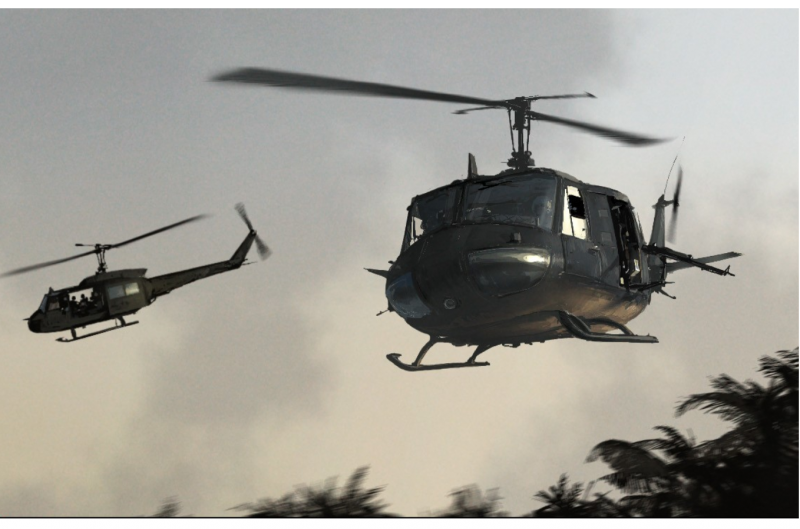
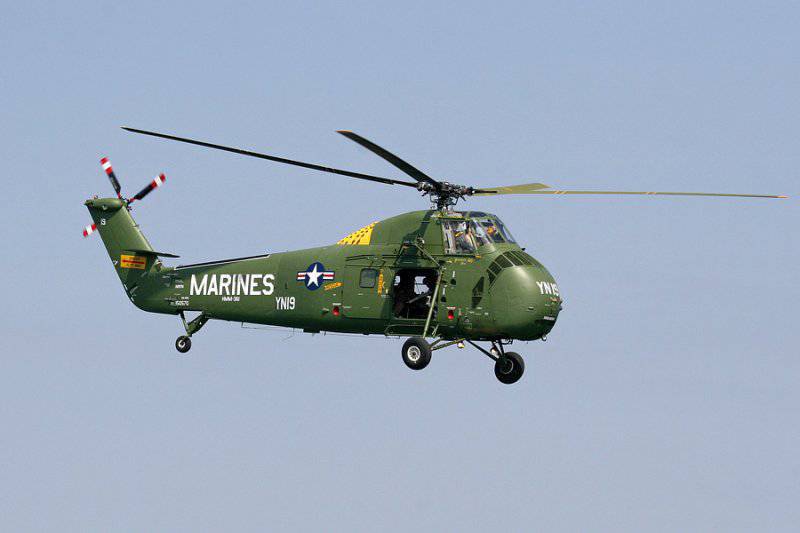
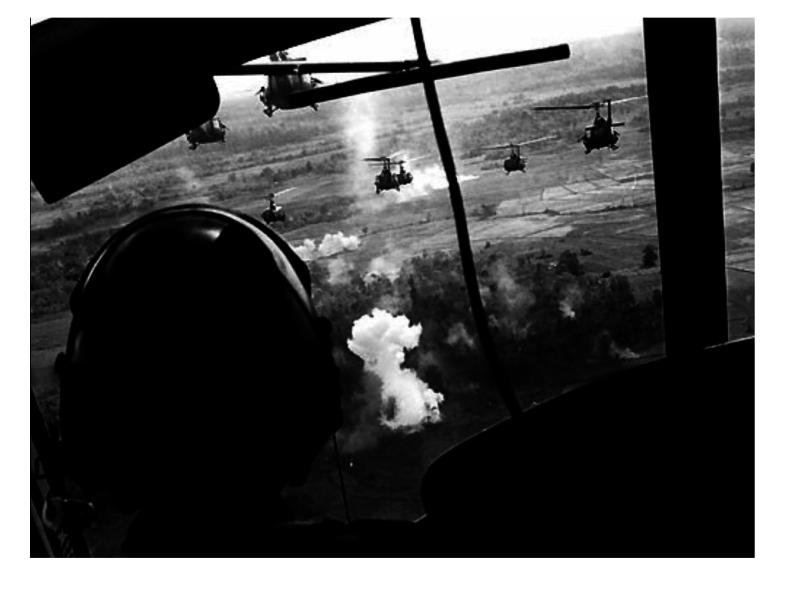
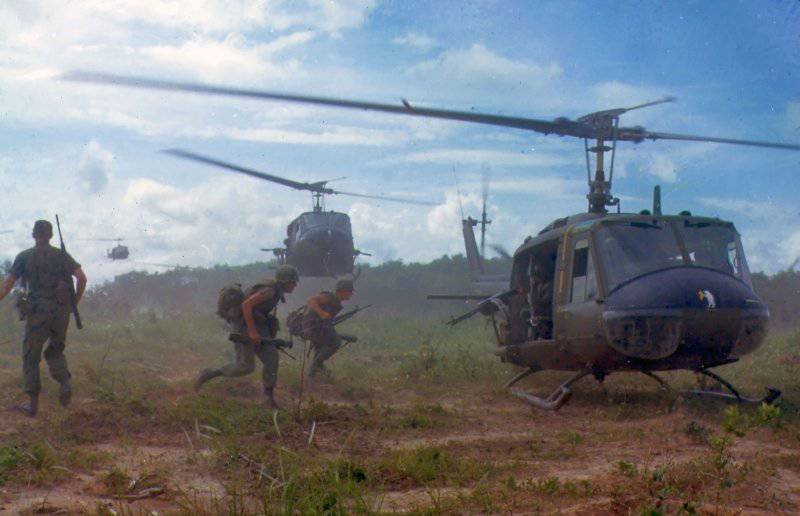
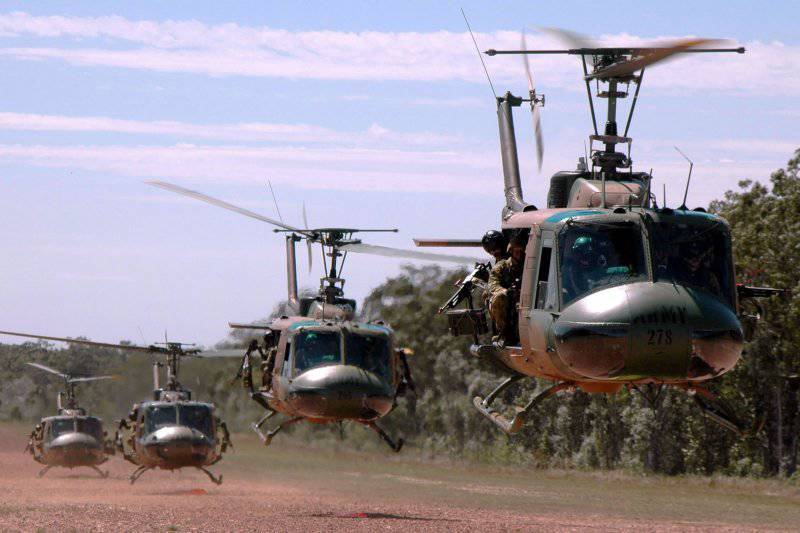
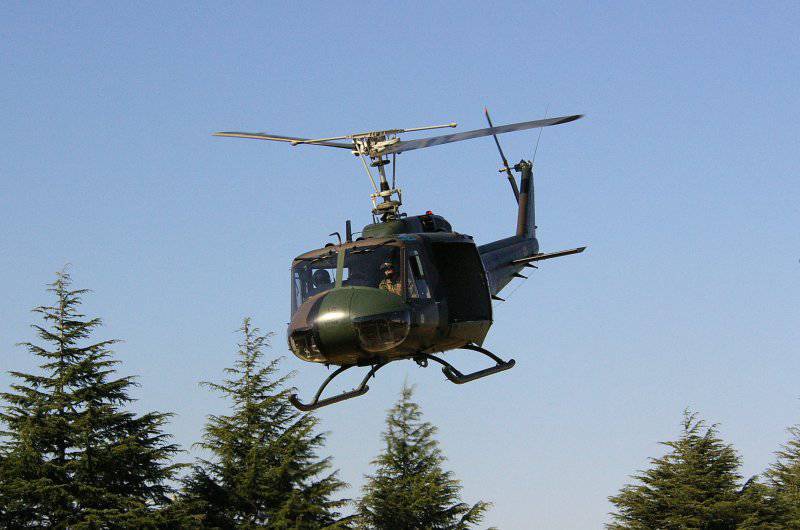

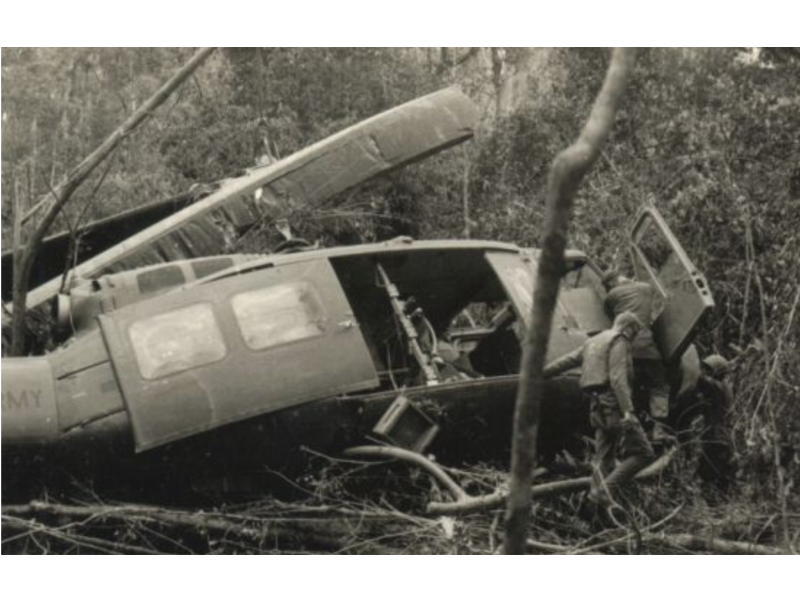
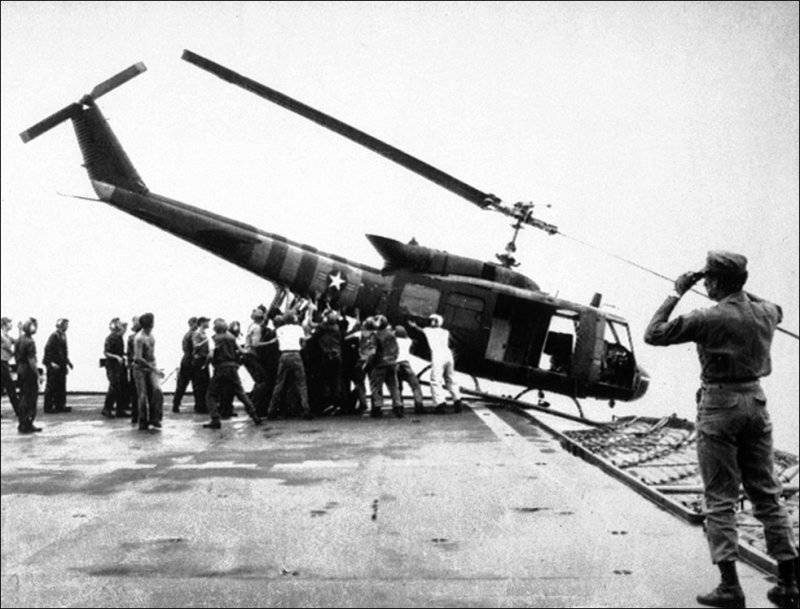
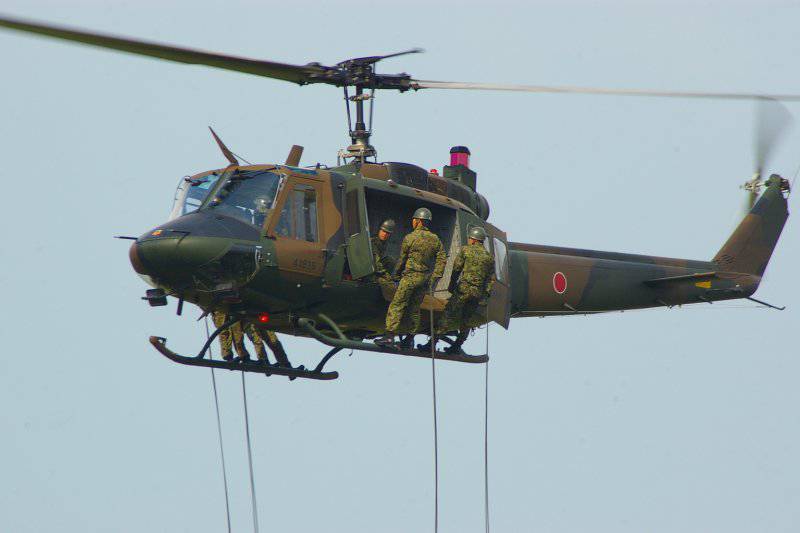
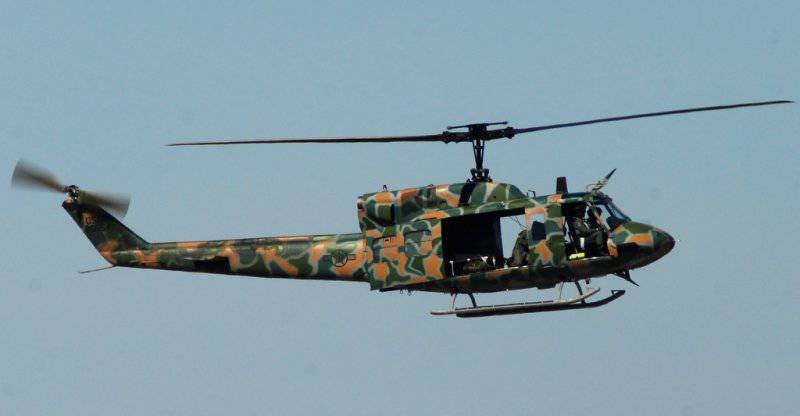
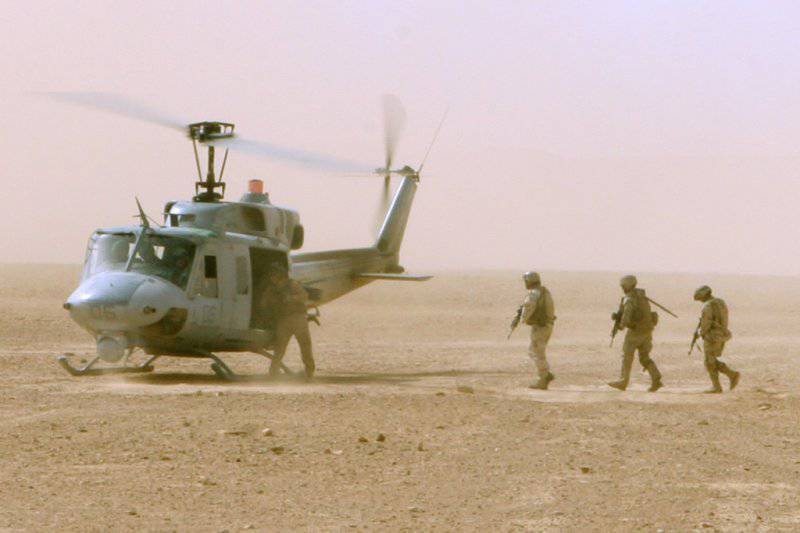
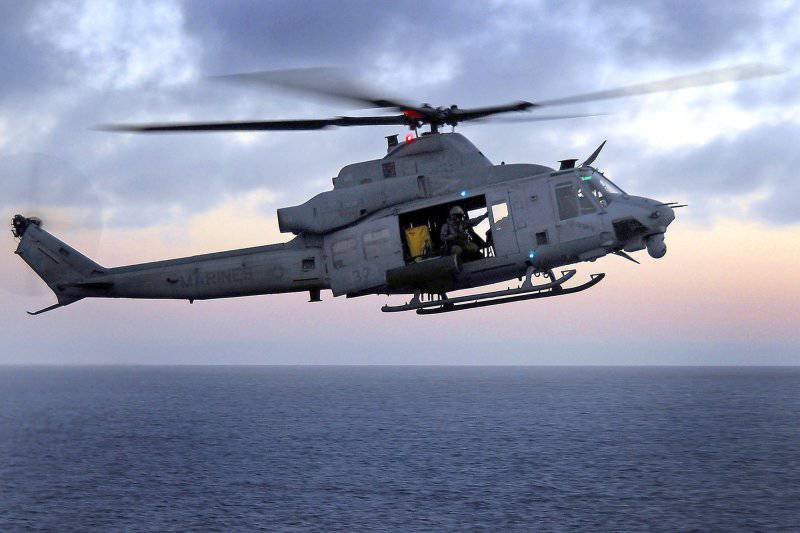
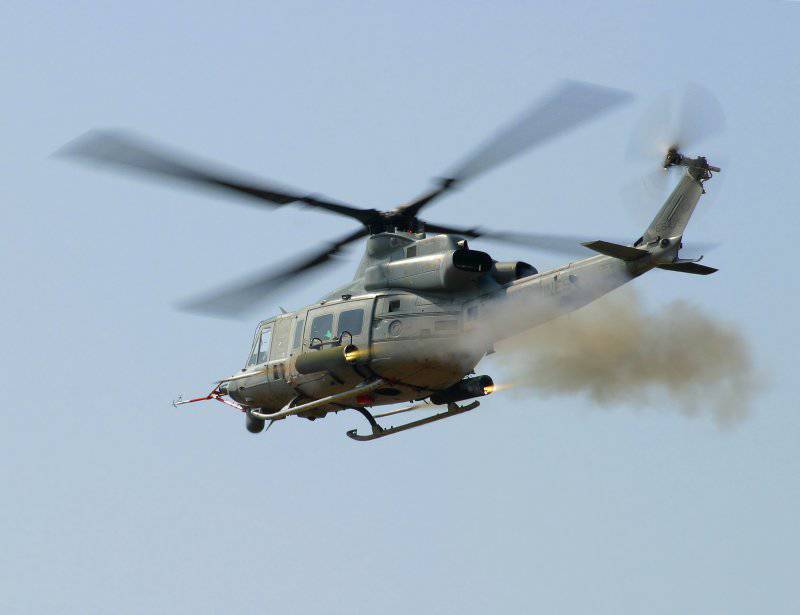
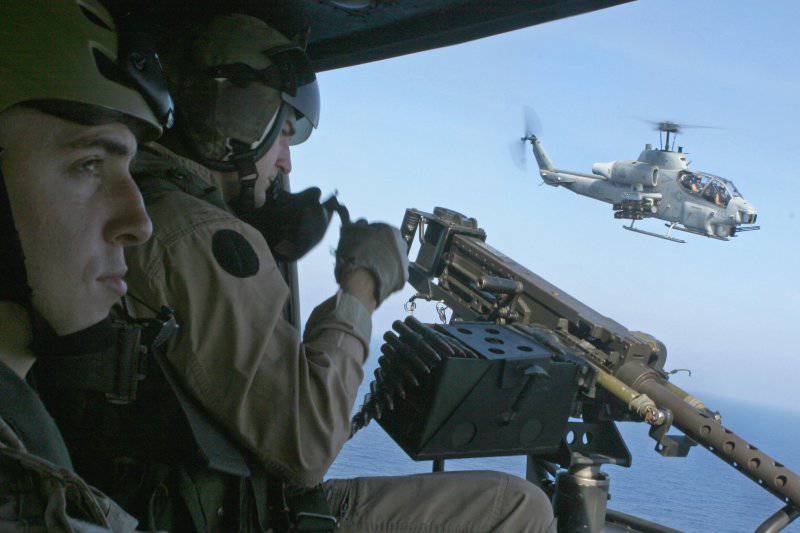
Information